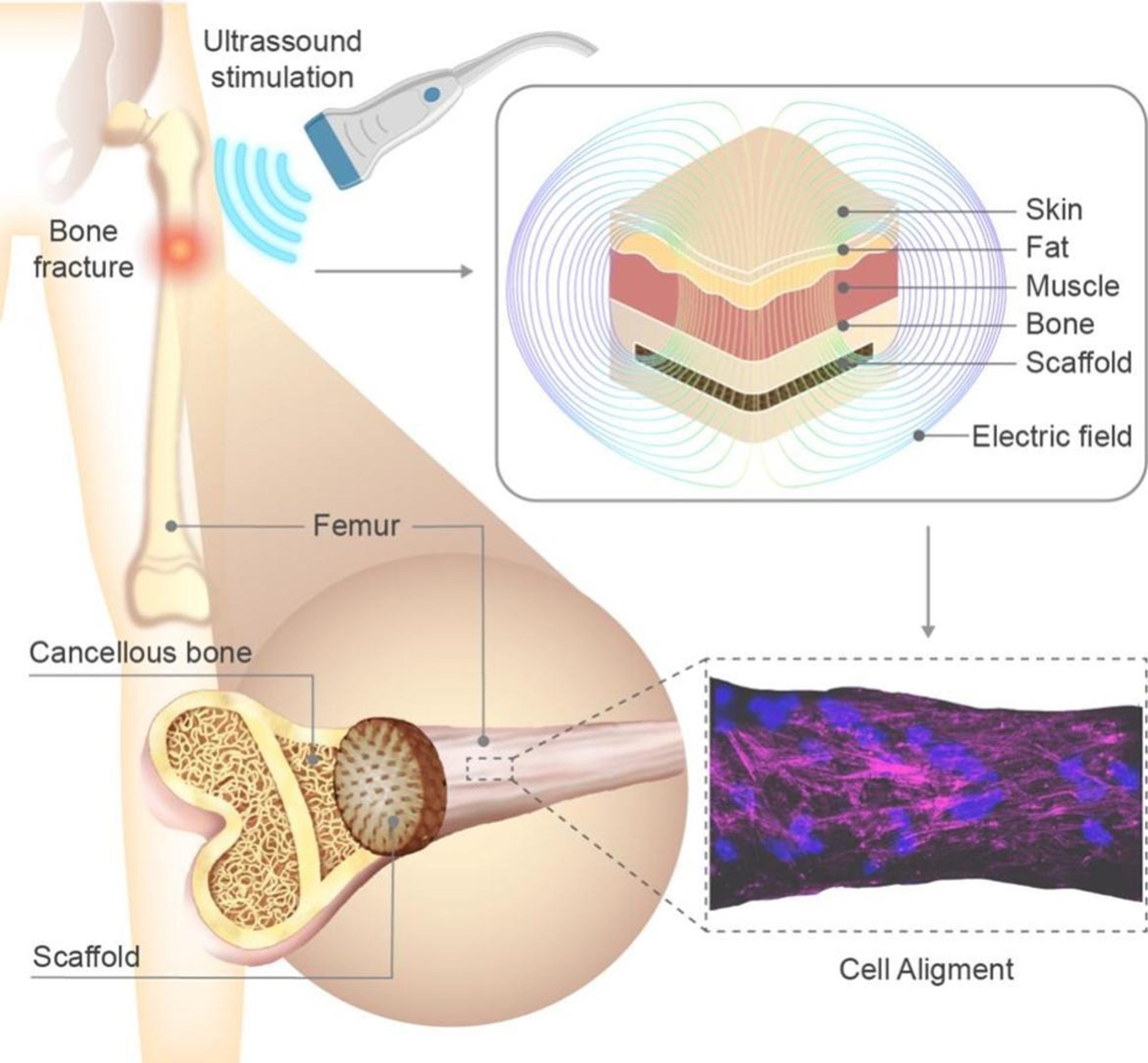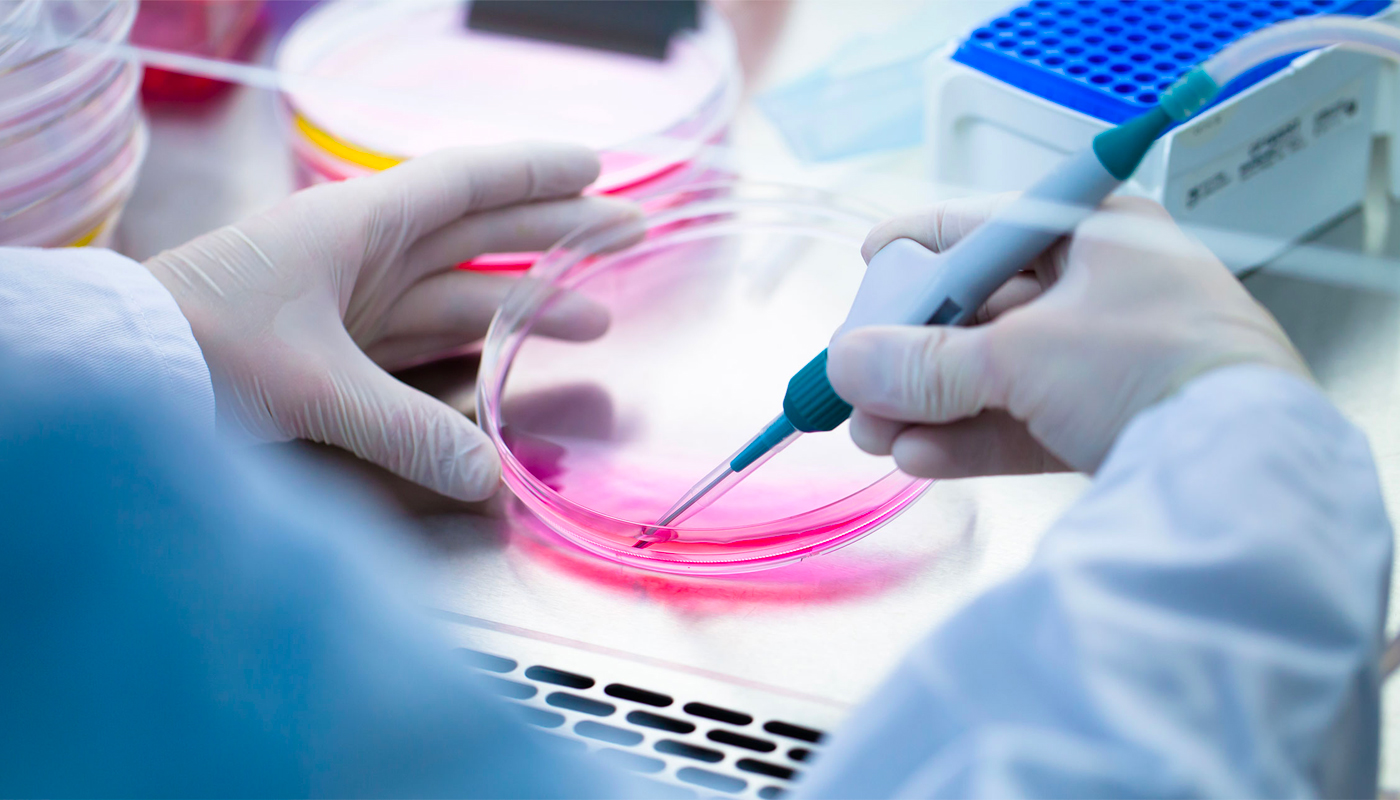Stimuli-responsive gyroid scaffolds: hierarchical architecture and electric stimulation promote bone regeneration

In a recent study led by the Federal University of São Carlos (Brazil) and CENIMAT/i3N-NOVA School of Science and Technology, SCERG-iBB researchers Frederico Barbosa and João Carlos Silva participated in the biological validation of new stimuli-responsive gyroid scaffolds fabricated via sacrificial templating as a promising platform for bone tissue engineering applications. The results of this work, recently published in the journal Materials Today, clearly demonstrate that the hierarchical scaffold generates electric fields in response to mechanical stimuli, enhancing the cytoskeletal alignment and osteogenic differentiation of human bone marrow-derived mesenchymal stem/stromal cells (hBMSCs). Moreover, by modulating the scaffold porosity and ultrasound stimulation intensity, it was possible to further boost the cells metabolic activity, osteogenic gene expression, and mineralization, key processes for enhanced bone regeneration. See more.
